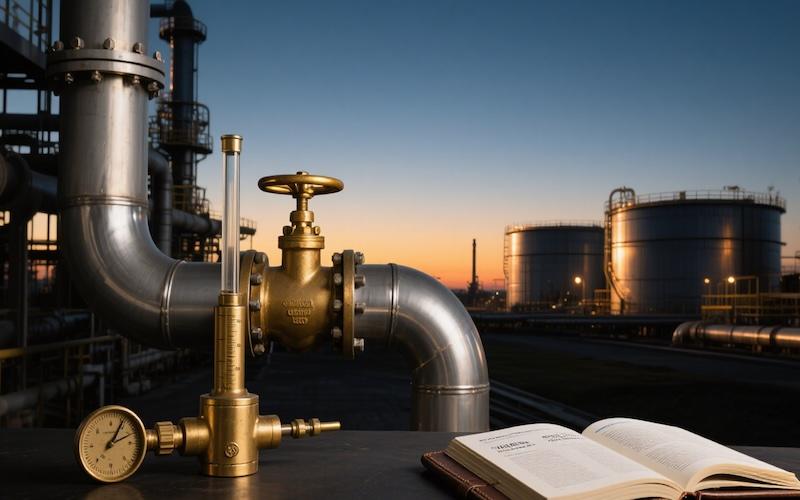Crude oil inventories unexpectedly increased, demand expectations were lowered, and WTI hovered at an 11-week low
2025-08-14 00:32:42
IEA lowers demand forecast, raises supply forecast
In its latest monthly Oil Market Report, the IEA lowered its forecast for global oil demand growth in 2025 to 700,000 barrels per day (bpd), 20,000 bpd lower than its July forecast and a cumulative reduction of 350,000 bpd since the beginning of the year. This is primarily due to weaker-than-expected demand in developing economies. The IEA also predicts that supply will far exceed demand by the end of the year and in 2026, further eroding the market balance.

The report noted that if additional sanctions are implemented on Russia and Iran, they could restrict supply from the world's third and fifth largest oil producers, but it is still too early to judge the outcome of these policy changes. The IEA stressed that "something will have to give" in order for the market to achieve balance.
Previously, the U.S. Energy Information Administration (EIA) sharply lowered its Brent crude oil price forecast for the fourth quarter of this year from $71 per barrel to $58 in its "Short-Term Energy Outlook", citing the fact that supply is expected to increase by 2 million barrels/day in the second half of 2025, while demand will only increase by 1.6 million barrels/day, which will lead to rising inventories and price pressure.
U.S. crude oil inventories unexpectedly rise
Data released by the EIA on Wednesday showed that U.S. crude oil inventories rose by 3 million barrels to 426.7 million barrels in the week to August 8, while analysts polled by Reuters had expected a decrease of 275,000 barrels. Inventories at the Cushing, Oklahoma delivery hub rose by 45,000 barrels.
During the same period, net U.S. crude oil imports increased by 699,000 barrels per day. John Kilduff, partner at Again Capital in New York, said that due to tariff resistance, U.S. crude oil exports are still lower than in previous years. If the export weakness continues, it will put pressure on prices.
Refinery crude oil processing increased by 56,000 barrels per day, but utilization rates fell 0.5 percentage points to 96.4%. Refinery utilization rates in the Midwest rose to their highest level since December 2023. Gasoline inventories fell by 792,000 barrels to 226.3 million barrels, a slightly larger-than-expected drop; the gasoline demand indicator fell slightly to 9 million barrels per day. Kilduff noted that while gasoline demand remains strong, the market is shifting its focus to distillates, including diesel and heating oil, as the summer driving season winds down.
EIA data showed that distillate inventories increased by 714,000 barrels to 113.7 million barrels, basically in line with market expectations; distillate demand rose to 1.83 million barrels/day, exceeding the four-week average of 1.75 million barrels/day.
Trump-Putin meeting raises expectations of sanctions
Oil prices fell after the data was released. As of 10:46 a.m. ET, Brent crude futures were at $65.32 a barrel, down 80 cents (1.2%), and WTI was at $62.25 a barrel, down 92 cents (1.5%).
Markets are also focused on Friday's planned meeting between US President Trump and Russian President Vladimir Putin in Alaska. US Treasury Secretary Jeffrey Bennett said that if the meeting goes poorly, sanctions or secondary tariffs could be increased, and called on Europe to take similar measures. He stressed that "all options are on the table."
OPEC and IEA forecasts diverge
Unlike the IEA's bearish view on demand, OPEC+ raised its forecast for global oil demand growth in 2025 in its monthly report released on Tuesday, and lowered its forecast for supply growth in the United States and other non-OPEC oil-producing countries, believing that the market will be tighter next year.
Independent energy analyst Gaurav Sharma pointed out that if we take the median demand forecast of the IEA and OPEC, which is slightly above 1 million barrels per day, it can be met by non-OPEC supply growth alone, so oil prices lack upward momentum in the short term.
At 00:29 Beijing time, WTI crude oil was trading at $62.08 per barrel, down 1.73%, while Brent crude oil was trading at $65.11 per barrel, down 1.45%.
- Risk Warning and Disclaimer
- The market involves risk, and trading may not be suitable for all investors. This article is for reference only and does not constitute personal investment advice, nor does it take into account certain users’ specific investment objectives, financial situation, or other needs. Any investment decisions made based on this information are at your own risk.





















